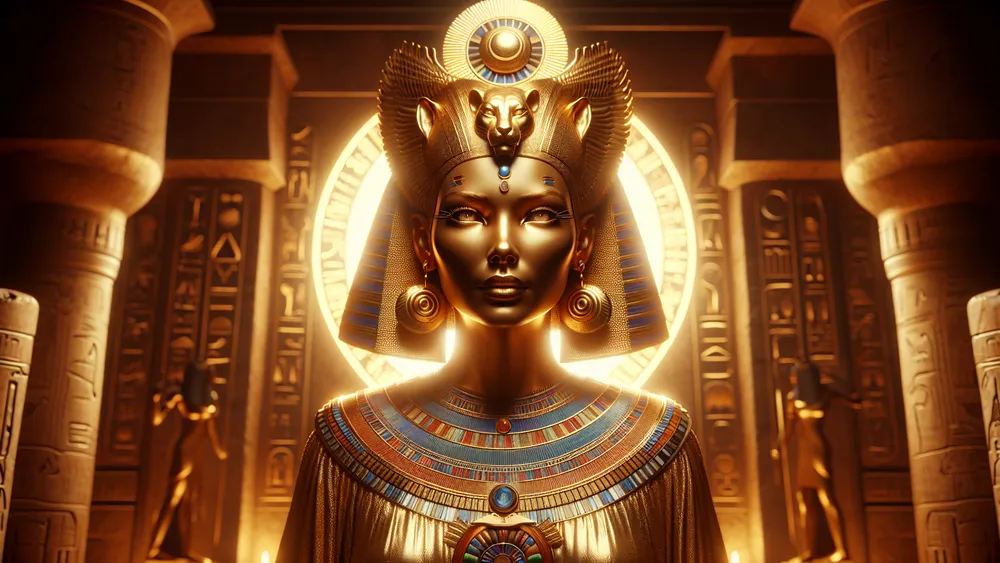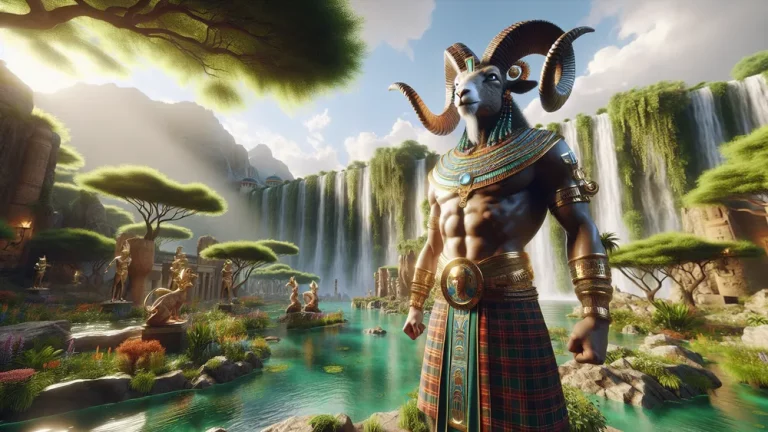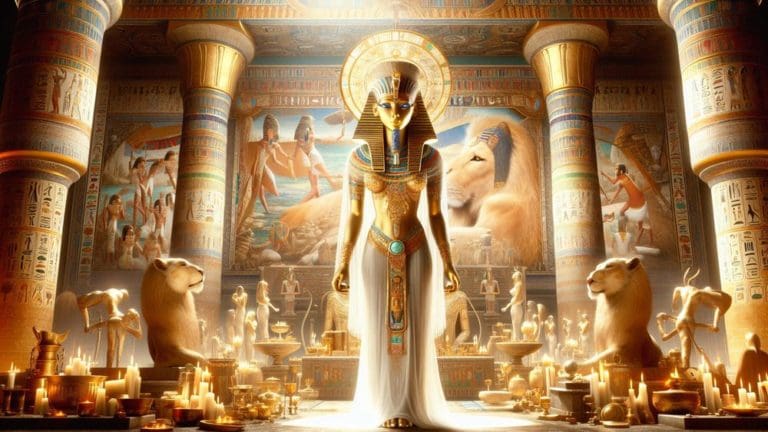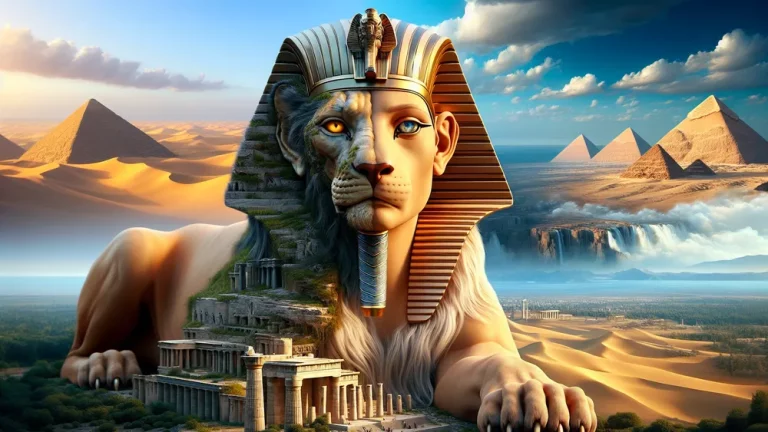Mut: Ancient Egyptian Sky And Mother Goddess
Mut, one of the most revered deities in ancient Egyptian mythology, holds a powerful place as both a sky goddess and a mother goddess. Revered for her nurturing and protective qualities, Mut’s influence transfused various aspects of Egyptian life, from royal ceremonies to daily rituals. Her divine relationships with other prominent gods, such as Amon and Khonsu, also cemented her status within the pantheon.
Key Points:
- Mut is an ancient Egyptian sky and mother goddess.
- Mut is venerated for her nurturing and protective qualities.
- Mut has divine relationships with other prominent gods like Amon and Khonsu.
- Mut’s symbols include the vulture headdress and the double crown.
- Mut is worshipped through daily offerings, ceremonies, and festivals.
- Mut’s legacy influences modern culture and Egyptian spirituality.
- Mut’s significance lies in her role as a mother and queen goddess.
This blog post delves into the origins, roles, symbols, and worship methods associated with Mut, exploring her enduring legacy and impact on both ancient and modern cultures. Join us as we uncover the fascinating story of Mut, the ancient Egyptian sky and mother goddess.
Mut is one of the most venerated deities in ancient Egyptian mythology. She’s not just a sky goddess but also a mother goddess.
People revere her for her nurturing and protective qualities. Her influence touches many parts of Egyptian life, from royal ceremonies to daily rituals. She has divine relationships with other big gods like Amon and Khonsu, which makes her even more important. In this blog post, we dive into her origins, roles, symbols, and how people worship her.
We also look at her lasting impact on both ancient and modern cultures. Join us as we uncover the fascinating story of Mut, the ancient Egyptian sky and mother goddess.
Who Is Mut?
So, who exactly is Mut? To get the full picture, we need to look at her beginnings and the many roles she plays in ancient Egyptian mythology. Let’s dive into her story.
The Origins of Mut
The name “Mut” in ancient Egyptian means “mother”. This really shows her role as a mother goddess. You see her name in texts from the Middle Kingdom period (around 2055-1650 BCE). Over time, her worship grows, especially during the New Kingdom era (circa 1550-1070 BCE). She becomes super important in Thebes, joining the Theban Triad with Amon and Khonsu.
Her name and role highlight her importance in fertility, childbirth, and royal legitimacy.
- Middle Kingdom period: First mentions of Mut.
- New Kingdom era: Her worship grows.
- Theban Triad: She joins Amon and Khonsu.
Mut’s role as a mother goddess grows in importance over time, especially during the New Kingdom era when she becomes a key figure in Thebes alongside Amon and Khonsu.
The Role of Mut in Ancient Egyptian Mythology
So, we know where Mut comes from. Now, let’s dive into the roles she plays in ancient Egyptian mythology. Her story only gets more fascinating from here.
Mut’s Relationship with Amon and Khonsu
Mut is the consort of Amon, and their divine marriage is a big deal in Theban theology. Their union shows the balance of male and female divine forces. Together, they have a huge influence on religious practices in Thebes. Then there’s Khonsu, their divine child. He’s the god of the moon and plays a key role in mythology.
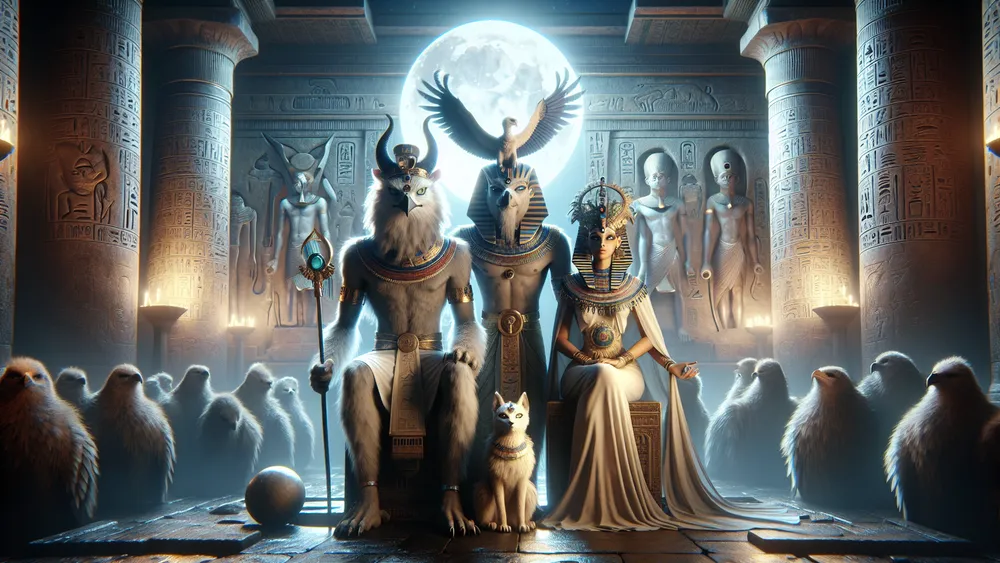
This family (Mut, Amon, and Khonsu) represents creation, protection, and cosmic order.
- Divine marriage: Mut and Amon’s union.
- Theban theology: Their combined influence.
- Khonsu: Their child, the moon god.
Mut’s Roles as a Mother Goddess
Mut takes on nurturing roles, especially in fertility and childbirth. She looks after mothers and children, keeping them safe. When you compare her to other mother goddesses like Isis and Hathor, you see both similarities and differences. Isis has magical powers and can bring people back to life. Hathor is all about love and music. But Mut?
She stands out with her strong ties to royal legitimacy and her vulture headdress (which symbolizes maternal protection).

| Goddess | Role in Mythology | Unique Attributes |
|---|---|---|
| Mut | Fertility, childbirth, protection of mothers and children | Strong connection to royalty, vulture headdress |
| Isis | Magic, resurrection, motherhood | Magical powers, resurrection abilities |
| Hathor | Love, music, motherhood | Association with love and music |
Mut’s Roles as a Queen Goddess
Mut has a special connection to royalty. She helps legitimize pharaohs. Her crown and regalia (like the vulture headdress and double crown) show her authority and divine protection. In royal ceremonies, pharaohs perform rituals and make offerings to honor her. These acts reinforce their right to rule. You often see Mut in royal iconography, standing next to pharaohs.
This highlights her role in maintaining divine order and royal legitimacy.
Symbols and Depictions of Mut
Alright, let’s jump into how Mut shows up in ancient Egyptian culture. Her symbols and depictions reveal a lot about her roles and importance.
The Vulture Symbol
The vulture is Mut’s main symbol, and it means a lot in ancient Egyptian culture. It stands for protection and motherhood because vultures are seen as caring creatures that look after their young. In art, you often see Mut with a vulture headdress, highlighting her role as a protective mother. Over time, her depictions change a bit, but some things stay the same.
She usually has the vulture headdress and sometimes the double crown, showing her royal status.
- Cultural significance: Represents protection and motherhood.
- Common depictions: Vulture headdress, double crown.
- Changes over time: Consistent features with some artistic variations.
The vulture symbolizes protection and motherhood in ancient Egyptian culture, often represented in art with a vulture headdress and sometimes a double crown.
Worship and Temples Dedicated to Mut
Alright, let’s dive into how people honor Mut through worship and the temples they built for her. These places and rituals really help us understand her importance better.
Major Temples of Mut
The Temple of Mut in Karnak really stands out. It’s part of the Karnak temple complex and has a sacred lake and lots of statues that honor her. You also find other important sites like the Mut Temple in Luxor and smaller shrines all over Egypt. These temples have unique features, like large courtyards and intricate carvings, all designed to venerate Mut.
They hold historical significance because they serve as centers of worship and help us understand ancient Egyptian religious practices better.
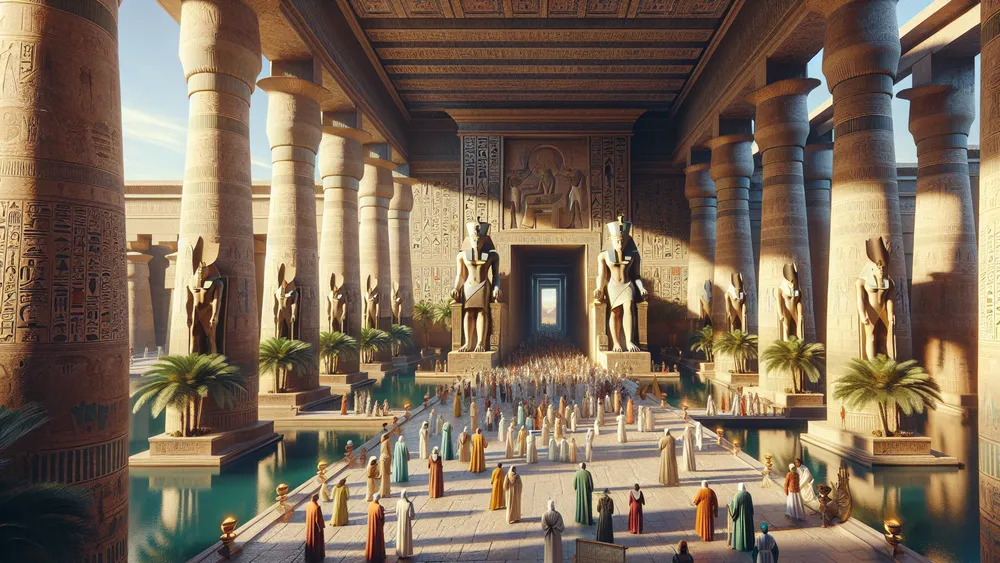
Rituals and Offerings Made to Mut
People in ancient Egypt had all sorts of rituals to honor Mut. They made daily offerings like food, drink, and incense. Special ceremonies? Those were more elaborate. Festivals dedicated to Mut, such as the Opet Festival, included processions and big communal celebrations. The offerings usually consisted of bread, beer, and flowers (each symbolizing things like sustenance, joy, and beauty).
Priests and priestesses played crucial roles in these rituals. They conducted the ceremonies and made sure the offerings were just right. Their involvement was key to keeping Mut’s favor and ensuring the community’s well-being.
Influence of Mut in Modern Culture
Mut’s story doesn’t just stay in ancient times. It continues to shape and inspire modern culture in all sorts of ways.
The Legacy of Mut in Egyptian Culture and Religion
Mut’s legacy sticks around, influencing later religious practices. People still honor her today, especially those into ancient Egyptian spirituality. Unlike many other deities, her legacy really stands out because she’s both a mother and queen goddess. This mix gives her a special spot in Egyptian mythology.
Sure, other deities like Isis and Hathor are important too, but Mut’s blend of maternal and royal traits makes her unique. Her lasting presence in religious practices and modern spiritual movements shows her lasting impact on Egyptian culture and religion.
Pantheon of All Egyptian Mythology Gods
Want to dive into the world of Egyptian gods? For a comprehensive list of all the Egyptian gods, check out this ultimate guide. It covers all the major deities and their roles in ancient mythology. You’ll find everything you need to know!
FAQs
1. What is the significance of Mut in Egyptian mythology?
The significance of Mut in Egyptian mythology lies in her role as a mother goddess and queen, symbolizing fertility, protection, and royal legitimacy.
2. Who were the children of Mut?
The children of Mut include Khonsu, who is often depicted as their divine child in ancient Egyptian mythology.
3. What was Mut’s role in ancient Egyptian society?
Mut’s role in ancient Egyptian society was primarily as a mother and queen goddess, symbolizing fertility, protection, and the legitimization of pharaohs.
4. How was Mut worshipped in ancient Egypt?
Mut was worshipped in ancient Egypt through daily offerings, special ceremonies, and festivals dedicated to her.

